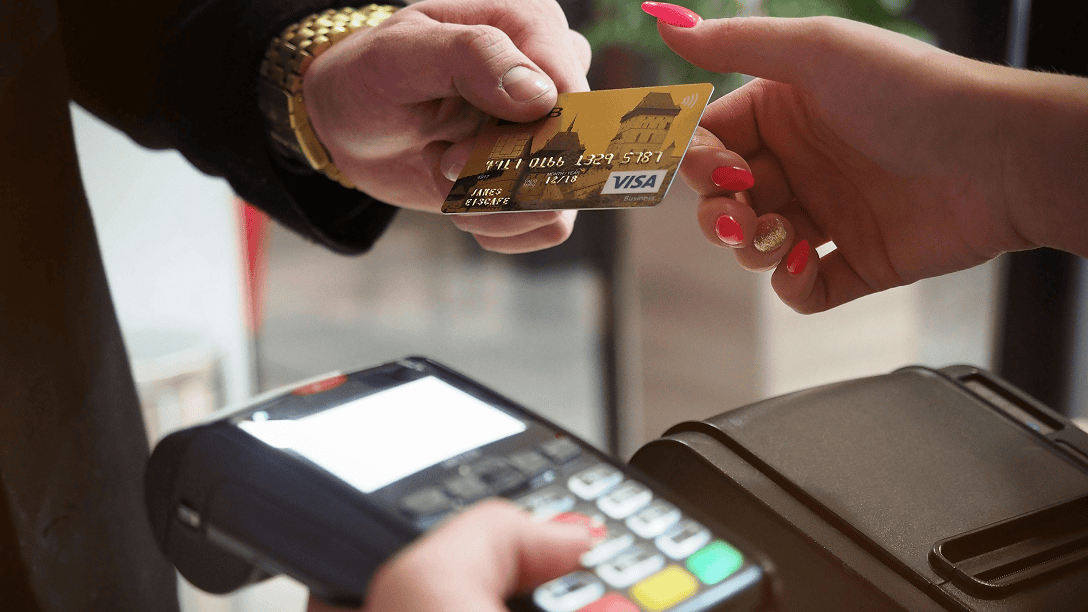
By Carol Carroll May 7, 2025
In today’s fast-paced hospitality environment, customer expectations and technology continue to evolve. For bar owners, adapting to these changes isn’t just about improving service, it’s also about reducing risk and ensuring compliance. One area that remains crucial in 2025 is EMV compliance.
Whether you run a lively sports bar or an upscale cocktail lounge, EMV compliance plays a critical role in protecting your business from fraud, chargebacks, and financial liability. This guide breaks down what EMV is, why it matters, and how you can stay compliant while running a smooth and profitable bar.
What Is EMV and Why Does It Matter?
EMV stands for Europay, Mastercard, and Visa. It refers to the global standard for smart payment cards that contain embedded microprocessor chips. These chips are designed to create unique transaction codes that are much harder to duplicate than the static data stored on traditional magnetic stripe cards.
The adoption of EMV in the United States began in 2015, but many small and mid-sized hospitality businesses, especially bars, were slower to transition. In 2025, EMV compliance is not just recommended — it is expected.
EMV vs Magnetic Stripe
The major difference between EMV and magstripe transactions lies in how information is processed. With a magnetic stripe, card data is static and vulnerable to cloning. With an EMV chip, data is encrypted and changes with each transaction, making fraud more difficult.
The Shift in Liability
Since the EMV liability shift, businesses that do not use EMV-compliant equipment are responsible for fraudulent transactions. If a cloned or stolen card is used at your bar and your terminal is not EMV-enabled, your business is on the hook for the loss.
The State of EMV Compliance in 2025
By 2025, most major retailers and restaurants have adopted EMV-compliant systems. However, a surprising number of bars and nightlife venues still rely on outdated POS systems.
Delays in upgrading are often due to perceived costs, the fast pace of service, or a lack of understanding of the risks. But with technology now more affordable and chargebacks on the rise, waiting is no longer a viable option.
Increased Pressure from Payment Processors
Payment providers in 2025 are tightening standards. Many are requiring merchants to use EMV-compliant terminals to maintain service or access better rates. Bars that have not yet made the switch may face higher processing fees or risk losing their merchant accounts.
Growing Risk of Chargebacks
Bars that serve high volumes of card-present transactions without EMV compliance are particularly vulnerable to fraudulent charges. With customer disputes and friendly fraud on the rise, the financial risk has never been higher.
How EMV Works in a Bar Setting
Implementing EMV in a bar may seem challenging, especially when quick service is a priority. However, modern payment solutions are designed to accommodate the unique needs of bar environments.
From tab pre-authorizations to table-side payments, today’s EMV systems support both speed and security.
Pre-Auth and Tips
One concern for bar owners is how to pre-authorize a tab with an EMV card. EMV terminals today allow pre-auths just like traditional magstripe readers. Customers’ cards are inserted, and a temporary hold is placed on a set amount, which can be adjusted later to include tips.
Mobile and Table-Side Solutions
Many EMV-compliant POS systems offer handheld devices for table-side or bar-side payment. These units process chip transactions, print or email receipts, and even allow for digital tipping — all without slowing service.
Customer Trust and Experience
Modern customers expect chip readers. Seeing staff swipe a card instead of inserting it may create concern or reduce confidence. Offering EMV-based payments signals that your bar takes security seriously https://barmerchantservices.com/are-you-overpaying-on-processing-fees-a-breakdown-of-hidden-costs-in-bar-transactions/.
What Happens if You Don’t Comply?

Choosing not to implement EMV in 2025 comes with consequences. Fraudulent transactions and chargebacks not only lead to revenue loss but also impact your relationship with banks and processors.
The costs of non-compliance are often far greater than the cost of upgrading your equipment.
Financial Liability
Without EMV, your bar is financially liable for fraudulent transactions. If a stolen card is used, the customer’s bank will issue a chargeback, and you will likely lose both the product and the payment.
Higher Processing Fees
Some processors increase fees for non-EMV merchants. You may also miss out on discounts or preferred terms available only to compliant businesses.
Reputational Damage
Even one data breach or payment issue can hurt your reputation. Customers talk, especially on social media. A lack of compliance can be viewed as unprofessional or careless in today’s environment.
Upgrading to EMV: What You Need to Know
Upgrading your POS system may feel overwhelming, but it is more accessible than ever. With many vendors offering turnkey solutions, most bars can become EMV-compliant in a matter of days.
The key is to choose equipment that supports your workflow and offers room for future growth.
Assess Your Current System
Start by reviewing your existing POS and payment setup. If your terminal still requires swiping, or if you’re using a legacy system without chip capabilities, you need an upgrade.
Look for signs of wear, software limitations, and whether your provider supports EMV technology.
Choose the Right POS for Bars
Bar environments need robust POS systems that handle high volume, quick ordering, and flexible payments. Look for systems that support EMV, allow pre-auths, integrate with inventory, and offer reliable customer support.
Cloud-based systems like Square for Restaurants, Toast, and Lightspeed are popular among bar owners for their ease of use and EMV-ready hardware.
Budget and Training
Costs for EMV terminals have come down significantly. Many providers offer lease-to-own or subscription-based models that include updates, support, and compliance features.
Training your staff is also essential. Ensure bartenders, servers, and managers understand how to use the equipment, pre-auth tabs, adjust tips, and respond to payment issues.
EMV and Beyond: What Comes Next

EMV compliance is an important step, but it is not the final word in payment security. As technology advances, bars must stay informed about the future of secure payments.
From contactless transactions to biometric verification, the next wave of innovation is already shaping how guests will pay.
Contactless and Mobile Wallets
In 2025, more customers are paying with Apple Pay, Google Pay, and other mobile wallets. EMV terminals also support these payments via NFC (near-field communication), allowing quick and secure tap-and-pay options.
These transactions are often faster than chip inserts and offer the same level of security.
Tokenization and Encryption
Tokenization replaces card data with a unique token, protecting information even if a system is compromised. Modern EMV systems use both tokenization and encryption to reduce risk, making your bar’s payment system safer for everyone.
Customer Data and Loyalty

Some EMV-compliant POS systems include CRM tools that let you track customer visits, collect feedback, and offer loyalty rewards. Used properly, these features can drive repeat business and increase average spend.
Frequently Asked Questions
Can I still accept magnetic stripe cards in 2025?
Yes, but doing so carries risk. Most EMV terminals allow swiping, but if a card has a chip and you choose to swipe it instead, your business becomes liable for any fraud that occurs.
Do I need to upgrade all terminals at once?
Not necessarily. If you have multiple registers or service areas, you can phase in upgrades. However, it is recommended to switch as soon as possible to reduce liability and streamline operations.
Will EMV slow down service?
Modern EMV terminals are designed for speed and efficiency. Pre-auth options and contactless payments help maintain a fast pace, especially during peak hours.
Final Thoughts
EMV compliance in 2025 is no longer optional for bar owners. It is a fundamental part of doing business safely and professionally. With fraud and chargebacks on the rise, and customer expectations evolving, now is the time to upgrade your system and train your team. By adopting EMV technology, you protect your business, enhance customer trust, and prepare for the future of payments. For bar owners, compliance is not just a legal box to check — it is a smart move toward long-term success.